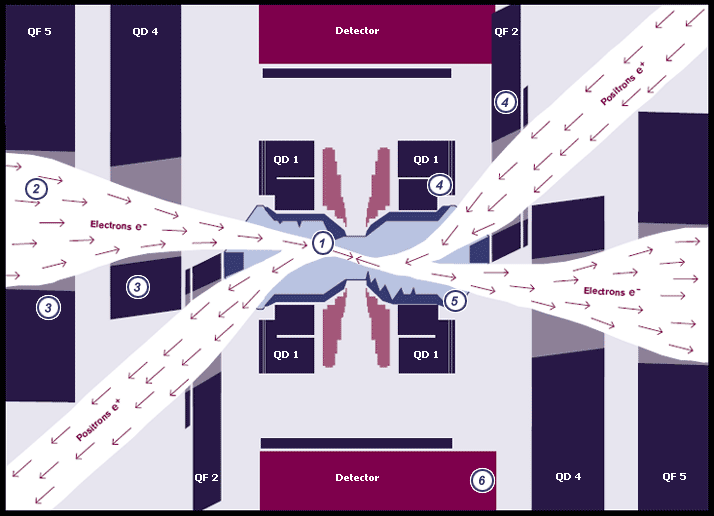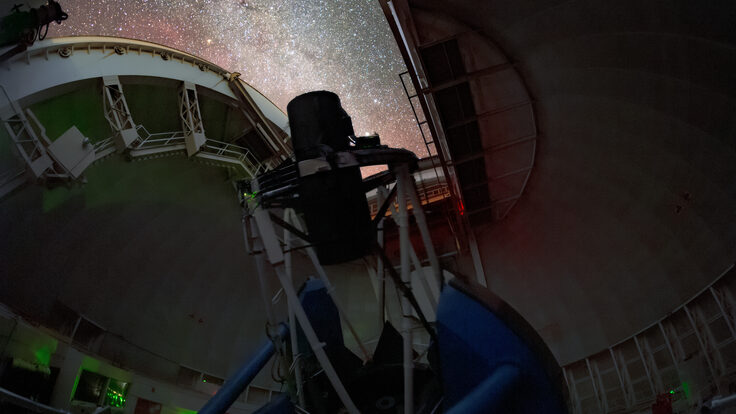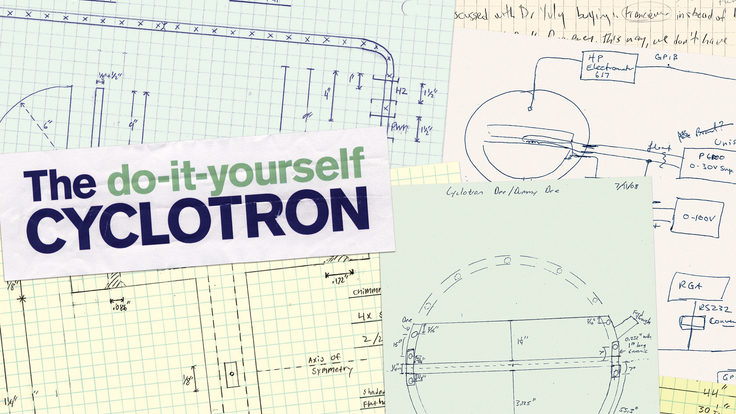Deconstruction: PEP-II interaction region
 |
|
Top view of the PEP-II interaction region. The scale perpendicular to the beam direction has been greatly magnified compared to the scale in the beam direction. |
| 1 | The Stanford Linear Accelerator pumps large amounts of energy into beams of electrons and positrons, sending them into the PEP-II storage ring where the particles can collide, revealing the secrets of fundamental particle processes. To maximize the chance for discovering new subatomic processes, accelerator physicists want the beams to produce the largest number of collisions. That means compressing the beams down to the smallest widths and heights achievable, and then making the beams collide head-on in the center of a detector that observes the remnants of each collision. |
| 2 | To prepare the two beams for collision, a series of magnets focus the beams and steer them toward each other. Merely pointing two beams straight at each other would destabilize both beams and prevent the circular collider from working. Instead, PEP-II features beams that enter the interaction region at an angle, and a clever system of magnets bends the beams right before the interaction point to allow head-on collision. Note that the vertical scale of this diagram is expanded by a factor of 35 to show the beam width and the detailed structure of the interaction region. |
| 3 | To squeeze the height and width of the electron beam as much as possible, the beam passes through the centers of two focusing quadrupole (four-part) magnets. The first magnet (QF5) compresses the height and the second (QD4) compresses the width. |
| 4 | The positron beam passes through a focusing magnet (QF2) to squeeze its height. The width squeezing is done in a quadrupole/dipole magnet combination (QD1) that also bends both the electron and positron beams sideways. The dipole (two-part) magnets are able to bend the 3.1-GeV positron beam more than the higher energy 9-GeV electron beam. This process is responsible for combining the beams and is fundamentally what allows for the head-on interaction. |
| 5 | Bending the beams allows them to collide head-on, but it also creates synchrotron radiation that would cause background signals in the detector and confuse the analysis of the actual collision data. For this reason, the beam pipe has a series of ramps, or radiation masks, to shield the detector from the unwanted radiation. |
| 6 | When the electron and positron beams collide, the occasional electron and positron annihilate into pure energy that transforms into heavy and exotic particles. Those new particles quickly decay into other, lighter particles. The BaBar detector, which surrounds the interaction region, registers this cascade of secondary particles, revealing more about the nature of fundamental particles. |
Click here to download the pdf version of this article.






